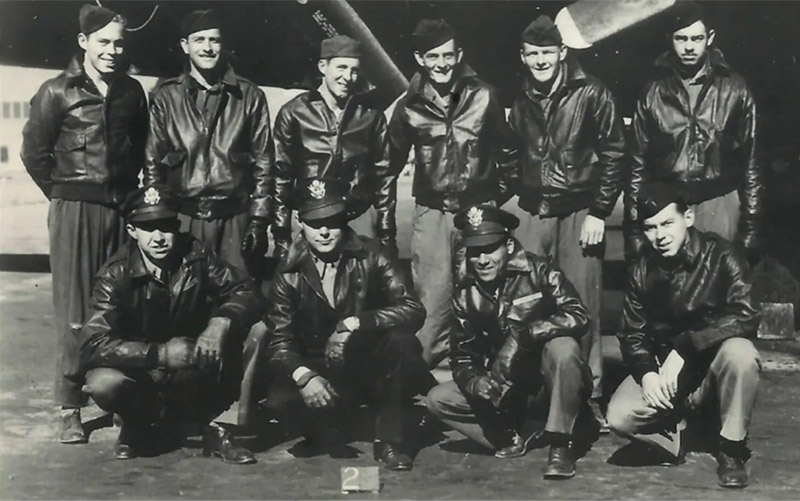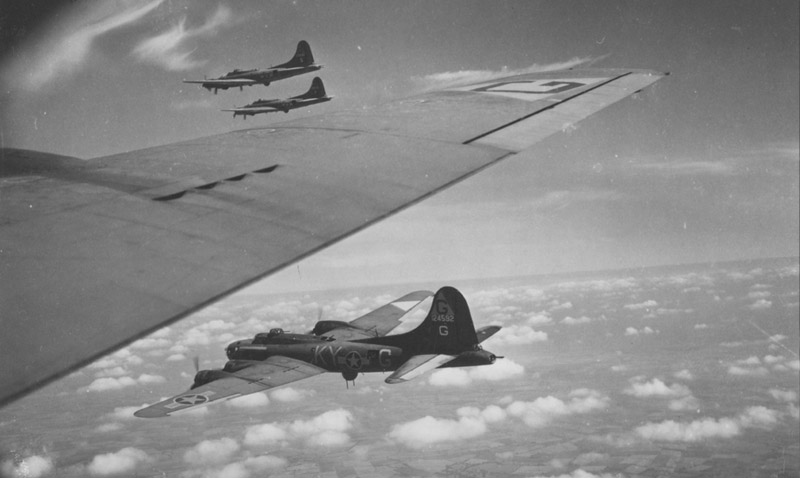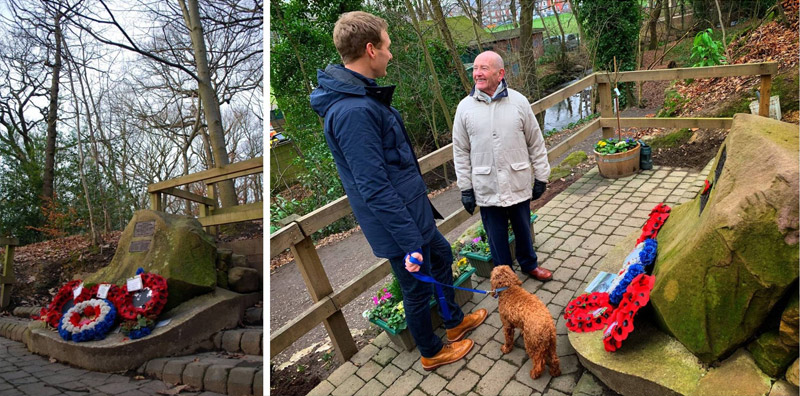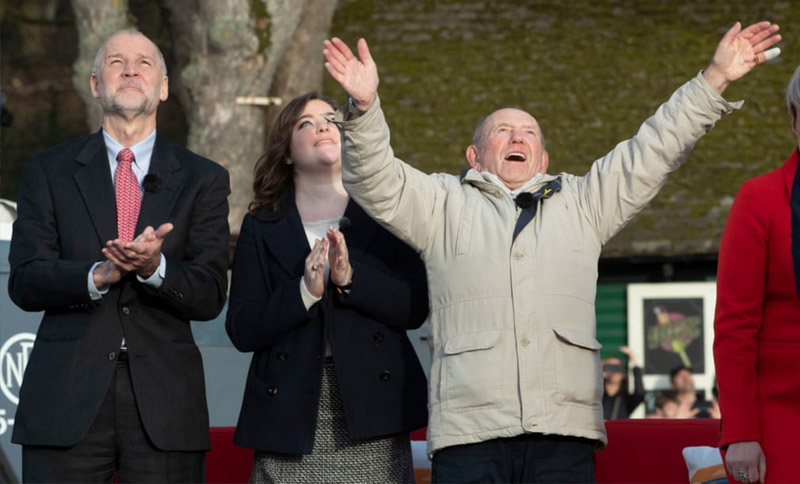BBMF Dakota in special flypast over Sheffield
Header image: BBMF Douglas C-47 Dakota ZA947 was part of the special flypast over Sheffield on 22nd February. (Photo: RAF Coningsby Photo Section Crown Copyright)
On Friday 22nd February BBMF C-47 Dakota ZA947 was involved in a special, high-profile flypast over Sheffield, broadcast live on BBC Breakfast TV.
The flypast by 10 military aircraft, which also included two Eurofighter Typhoons from RAF Coningsby, a USAF MC-130 Hercules with a Bell Boeing V-22 Osprey, a KC-135 ‘tanker’ and four USAFE F-15E fighter jets, was mounted to commemorate the crew of a Boeing B-17 Flying Fortress bomber, all 10 of whom died when their aircraft crashed at Endcliffe Park, Sheffield, 75 years ago to the day.

In February 1944 B-17 42-31322, named ‘Mi Amigo’ by its crew, was on the strength of the 364th Bomber Squadron, part of the 305th Bomber Group of the USAAF Eighth Air Force, based at Chelveston, near Wellingborough in Northamptonshire. On 22nd February, during a daylight bombing raid against the airfield at Alborg in occupied Denmark, ‘Mi Amigo’ was attacked by Luftwaffe fighters and badly damaged, but limped away over the North Sea. It is probable that some of the crew were dead or wounded, at least one of the engines was damaged, the fuselage skin was in tatters and the crew could not effect radio communications. The aircraft was having difficulty maintaining altitude and began to fall behind the rest of the bomber formation. One of the other B-17s was assigned to provide a close escort, but the weather deteriorated over the sea, which made this impossible, leaving ‘Mi Amigo’ alone in cloud.

For whatever reason ‘Mi Amigo’ ended up well off course, about 100 miles north of her home base, over the city of Sheffield. It is possible that her navigation equipment was out of action or that the crewmen who could use it were incapacitated or dead. In addition, the cloud base over much of England was at about 500 feet; perhaps the B-17’s pilot, First Lieutenant John Kriegshauser, chose to fly on for as long as he could in the hope that the weather would clear. It never did, and ‘Mi Amigo’ emerged over Endcliffe Park, Sheffield, which Kriegshauser may have thought would provide a last, desperate chance to crash-land the aircraft on its belly to save the lives of those on board.
It was just after 5 p.m. and some youngsters were playing and scuffling in the park. Amongst them was Tony Foulds, who was then nearly eight years old and who has never forgotten that day. He said: “Me and a few mates had arranged to meet in the park, basically to have a fight with a few other lads from a neighbouring school. We saw the plane circling the park. The airmen were waving at us, but being young boys we just thought they were being friendly. We were only eight. But it was them saying ‘get out of the way’… The next thing it went over the trees and there was a huge explosion. It went straight into the ground.”

‘Mi Amigo’ crashed into the trees on the downslope of the hill, shedding her tail, and with the forward section ablaze. It was the 43rd USAAF bomber to be lost that day. There were no survivors; all ten of the crew lost their lives in what was seen as a final selfless act to save lives on the ground.
The official USAAF records cite the “extraordinary achievement” of pilot John Kriegshauser, who was posthumously awarded the American DFC. The citation states: “Displaying consummate skill, he piloted the aircraft back to England. Although unfavourable weather conditions were prevalent, Lieutenant Kriegshauser attempted to locate a field in which to land. Engines became inoperative over a heavily built-up area (Sheffield) and he was forced to crash land. An English home was directly in the path of the bomber, but Lieutenant Kriegshauser, exhibiting exemplary devotion to duty, manoeuvred the crippled aeroplane over the dwelling. It crashed in a wood approximately 100 yards away. The courage, coolness and skill displayed by Lieutenant Kriegshauser reflect the highest credit on himself and the armed forces of the US.” The rest of the crew were each awarded the Air Force Medal.
A memorial service has been held at the site of the ‘Mi Amigo’ crash since 1969, when the Sheffield branch of the Royal Air Force Association erected a memorial in Endcliffe Park, funded by donations from the people of Sheffield. It is surrounded by 10 American oak trees to honour the aircraft’s crew.

Right: Tony Foulds (right) has tended the memorial for decades and met BBC presenter Dan Walker (left) walking his dog, starting the massive social media campaign that touched the nation’s hearts and led to the special flypast.
Ever since then, Tony Foulds, who is now 82, has personally tended the memorial, visiting it three times a week, partly through a deep-seated sense of guilt. He says that he feels responsible for the airmen’s deaths because the aircraft was trying to avoid crashing on him and the other children in the park. Recently, a chance meeting at the memorial with BBC presenter Dan Walker, who was walking his dog in the park, led to a huge social media campaign, which touched the hearts of the nation, to try to fulfil Tony’s dream of having a military flypast to commemorate the 75th anniversary of the crash. A dream that came to fruition on 22nd February.

The BBMF was delighted to be able to take part in this special flypast with the Dakota having been made airworthy earlier than usual this year. It was piloted for this special occasion by the BBMF Bomber Leader, Flight Lieutenant Neil ‘Faz’ Farrell, who said: “It was an honour to take part in the flypast to remember the sacrifice the B-17’s crew made and to be able to show Tony the gratitude he deserves for his dedication to their memory.”







